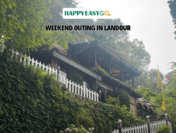Nestled high in the Western Himalayas, the Valley of Flowers is a veritable paradise on earth. This UNESCO World Heritage site, located in the Indian state of Uttarakhand, bursts into a riot of colors every June as the snow melts and the monsoon rains begin to rejuvenate the landscape. The valley, a part of the Nanda Devi Biosphere Reserve, is renowned for its meadows of endemic alpine flowers and its rich biodiversity. Exploring the floral beauty of the Valley of Flowers in June offers an unforgettable experience, a feast for the eyes and the soul.
A Brief History
The Valley of Flowers was relatively unknown to the outside world until 1931 when it was accidentally discovered by Frank S. Smythe, a British mountaineer. He stumbled upon this valley during an expedition to Mt. Kamet. Enchanted by its breathtaking beauty, Smythe later wrote a book titled “The Valley of Flowers,” which brought global attention to this hidden gem. Today, it attracts thousands of botanists, nature lovers, and trekkers who are eager to witness its splendor.
Ensure your hotel booking in advance to never miss your chosen stays.
The Journey Begins
The journey to the Valley of Flowers starts from the town of Govindghat, located about 292 kilometers from Dehradun, the capital of Uttarakhand. From Govindghat, a 14-kilometer trek leads to the village of Ghangaria, the last human habitation before the valley. This trek is moderately challenging, but the stunning scenery along the way makes every step worthwhile. The route winds through dense forests, alongside the gushing Alaknanda River, and past numerous waterfalls, offering a prelude to the beauty that awaits in the valley.
June: The Perfect Time to Visit
While the Valley of Flowers is open from June to October, June is arguably the best time to visit. As the snow from the previous winter starts to melt, the valley is transformed into a verdant carpet, dotted with a kaleidoscope of wildflowers. The monsoon rains, which begin in June, further enhance the floral display, making the valley an unparalleled sight. So, book your flight ticket sooner to never miss the perfect time to visit this place.
The Floral Extravaganza
The Valley of Flowers is home to over 600 species of plants, many of which are endemic to the region. In June, you can witness a stunning variety of flowers in full bloom. The valley’s most famous resident is the blue poppy, often called the Queen of the Himalayas, which stands out with its delicate blue petals. Another notable flower is the Brahma Kamal, a rare and sacred flower in Hindu mythology, which blooms at high altitudes.
As you wander through the valley, you’ll also encounter vibrant patches of marigolds, daisies, anemones, and primulas. Each turn in the path reveals a new burst of color, with flowers carpeting the ground in shades of red, yellow, pink, and blue. The sheer diversity of flora is staggering, and it’s easy to see why the Valley of Flowers is considered a botanical marvel.
Beyond the Flora
While the flowers are the main attraction, the Valley of Flowers is also home to a diverse array of fauna. The park is inhabited by rare and endangered animals such as the Asiatic black bear, snow leopard, musk deer, and blue sheep. Birdwatchers can also delight in spotting species like the Himalayan monal, snow pigeon, and various types of pheasants.
The Spiritual Connection
The Valley of Flowers holds a special place in Hindu mythology. It is believed to be the place where Hanuman found the Sanjeevani Booti, a life-saving herb, to revive Lakshmana during the battle in the Ramayana. The valleyâs serene and untouched beauty adds to its mystical aura, making it a place of spiritual significance for many visitors.
Preparing for the Trek
Visiting the Valley of Flowers requires some preparation. The trek can be challenging, especially for those not accustomed to high altitudes. It is advisable to acclimatize yourself in Govindghat or Ghangaria before heading to the valley. Proper trekking gear, including sturdy shoes, rain gear, and warm clothing, is essential. Additionally, it’s important to carry sufficient food and water, as there are limited facilities available once you leave Ghangaria.
Conservation Efforts
The Valley of Flowers is a protected area, and conservation efforts are in place to preserve its delicate ecosystem. Visitors are required to adhere to strict guidelines to minimize their impact on the environment. This includes staying on designated trails, not picking flowers, and ensuring that all waste is carried back to Ghangaria.
Conclusion
Exploring the Valley of Flowers in June is a journey into nature’s wonderland. The valley’s stunning floral display, set against the backdrop of the majestic Himalayas, offers a unique and unforgettable experience. Whether you’re a botanist, a trekker, or simply a lover of natural beauty, the Valley of Flowers promises to leave you spellbound. As you stand amidst the sea of blooms, breathing in the fresh mountain air and taking in the breathtaking vistas, you’ll understand why this place is truly a paradise on earth.



